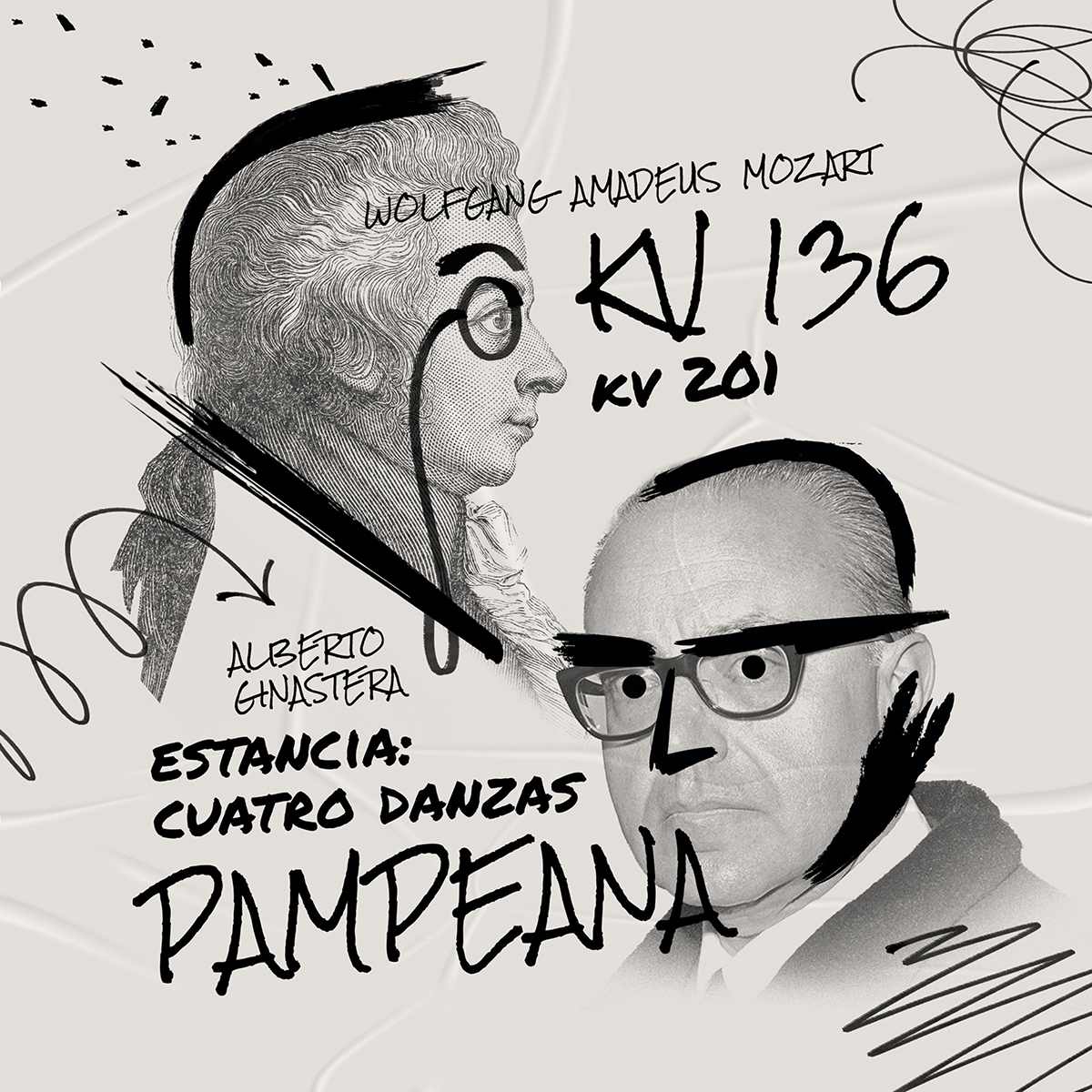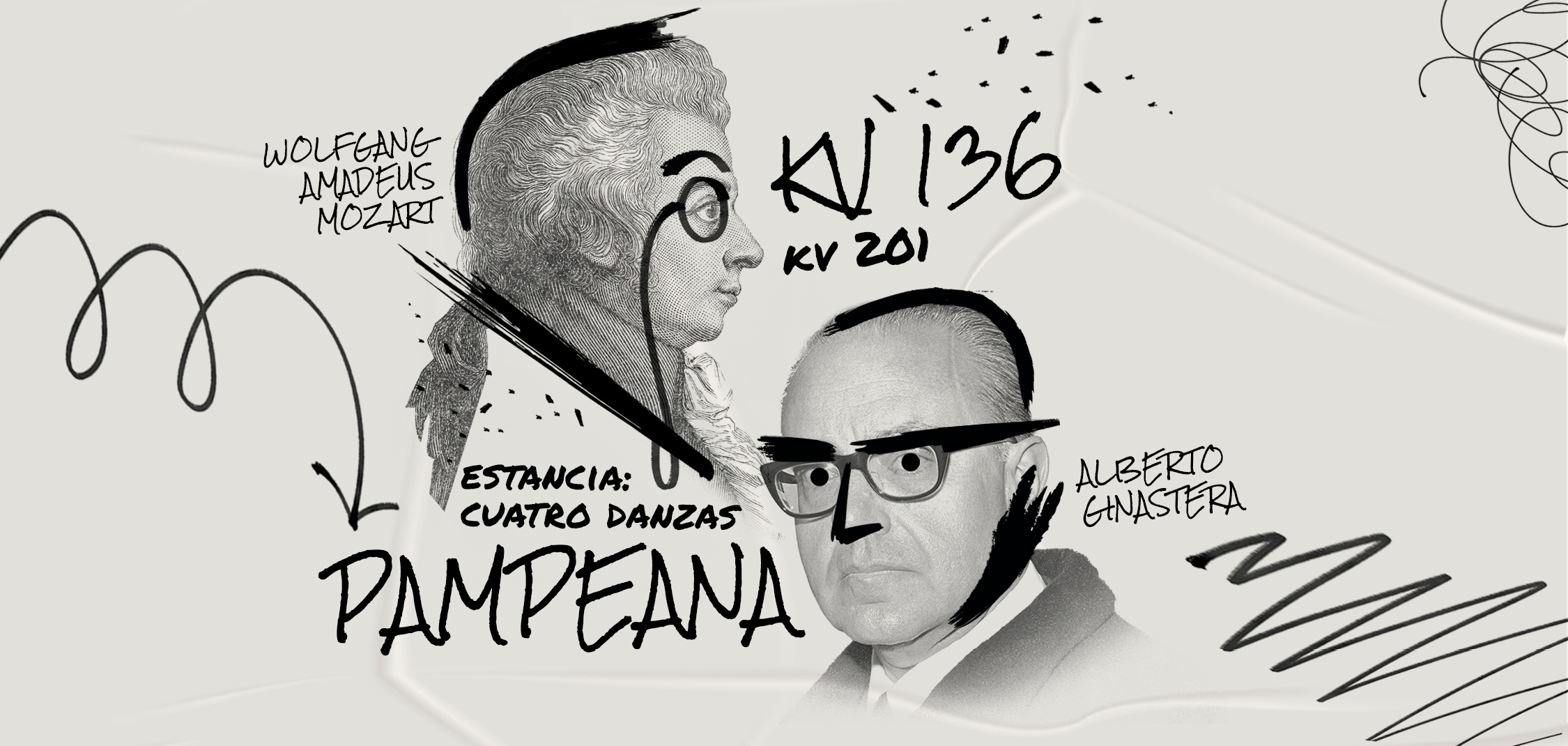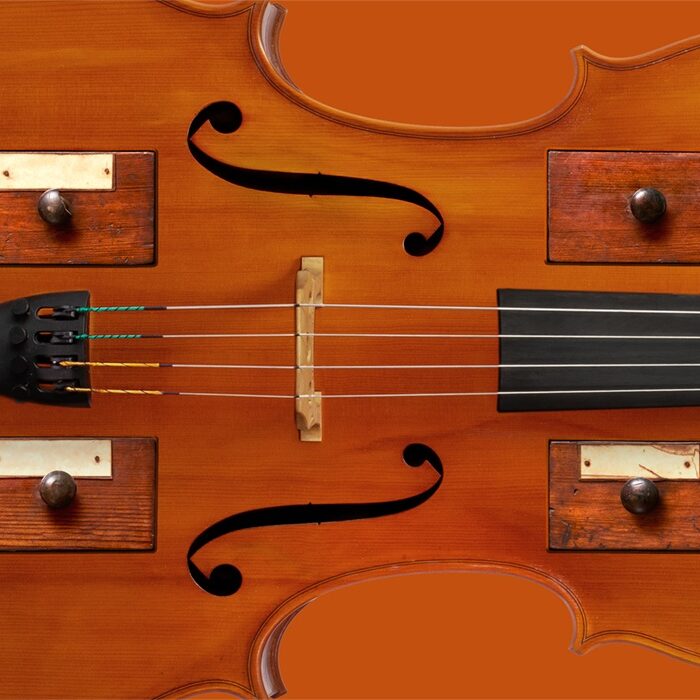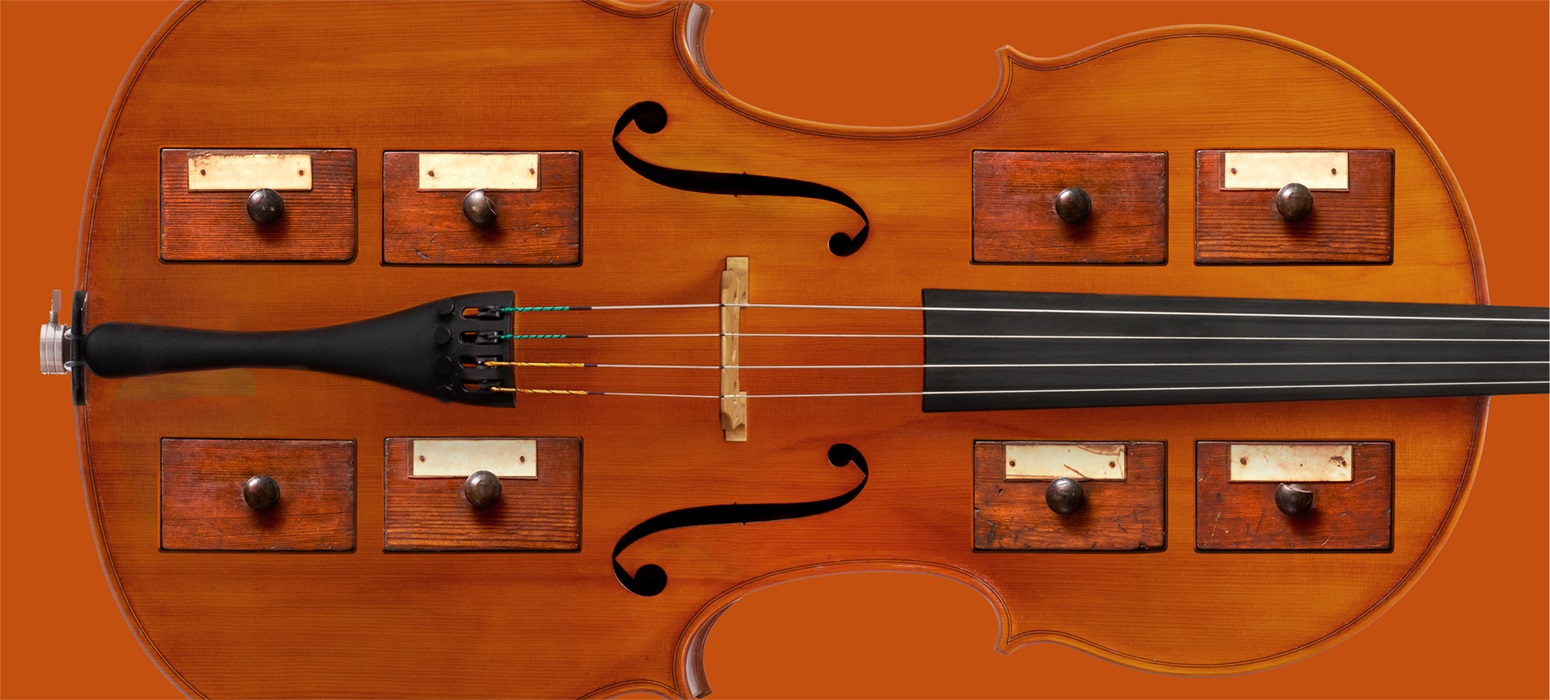The Argentine pampa “is not only a physical environment, but also a way of life,” observed philosopher Carlos Astrada in 1948 in his book El mito Gaucho. In two works for piano and cello (Pampanea No. 1 and No. 2) and in a symphonic pastoral (Pampanea No. 3), Argentine composer Alberto Ginastera also explored, almost at the same time, life in the vast treeless grasslands. In 1941, impresario Lincoln Kirstein commissioned him to write a one-act ballet with five scenes for his company, the American Ballet Caravan, which dissolved a year later. Ginastera’s music, closely tied to the life of the gauchos, was nevertheless first performed in 1943, in the form of a four-movement concert suite, at the Teatro Colón in Buenos Aires. It immediately became a worldwide success.
From the “spirituality” of the pampa to the “Sturm und Drang” of 18th-century Europe: a sixteen-year-old Mozart composed the Divertimento K. 136 in the spring of 1772 for the Prince-Archbishop of Salzburg. With his Symphony No. 29, written two years later, he moved away from Italian models, as Mozart scholar Albert Einstein noted, transcending mere decorative elements with a “chamber-music refinement” that avoids anything conventional or banal. The symphony carries with it an air of freshness and novelty. A young genius was beginning to carve out a style of his own.





